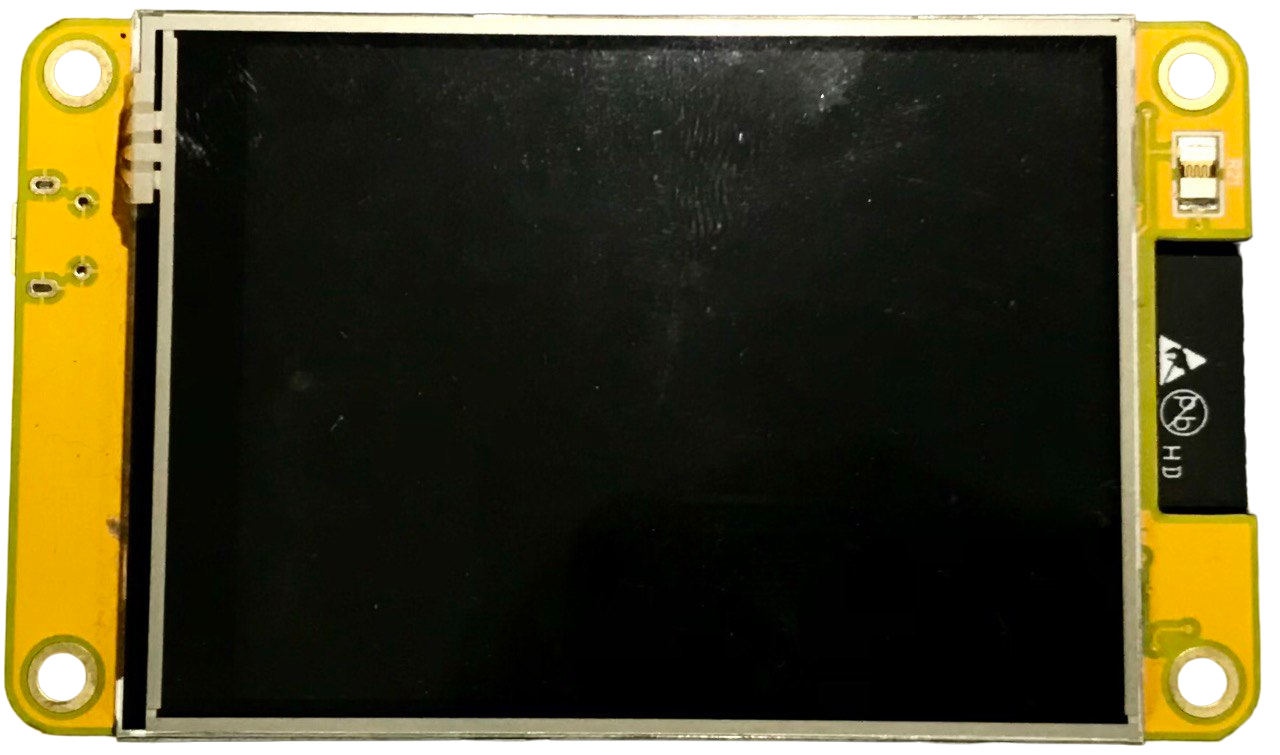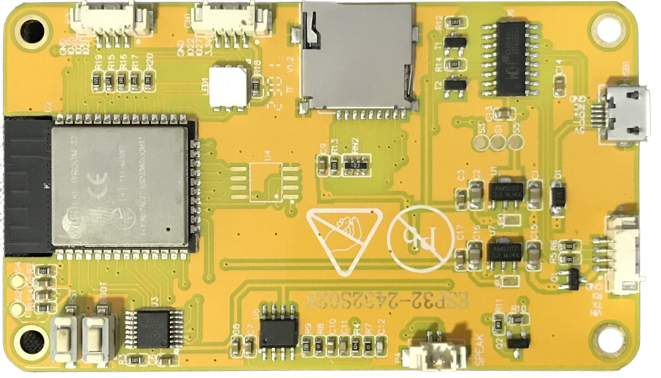ESP32-2432S028
chip:esp32, chip:esp32wrover32
The ESP32-2432S028 is a development board based on an ESP32-WROVER-32 module. It is designed for a wide range of applications, particularly in the field of the Internet of Things (IoT).


Features
- LCD screen (2.8 inch)
- MicroSD card slot
- RGB LED
- Audio
- Light Dependent Resistor (LDR)
Most of I/O pins are broken out to the boards, but from the back side of the board, there are some pins available are separated into two connectors femme JST 1.28 mm 4P.
Serial Console
UART0 is, by default, the serial console. It connects to the on-board CH340 converter.
Buttons and LEDs
Board Buttons
There are two buttons labeled BOOT and RST. The RST button is not available to software. It pulls the chip enable line that doubles as a reset line.
The BOOT button is connected to IO0. On reset it is used as a strapping pin to determine whether the chip boots normally or into the serial bootloader. After reset, however, the BOOT button can be used for software input.
Board LEDs
There is one RGB LED available.
Pin Mapping
Pin Signal Notes
0 2 4 12 13 14 15 16 17 21 26 34 BOOT Button LCD Reset RGB LED Green LCD MISO LCD MOSI LCD Clock LCD CS RGB LED Blue RGB LED Red LCD Backlight Audio Out LDR
Configurations
All of the configurations presented below can be tested by running the following commands:
./tools/configure.sh esp32-2432S028:<config_name>
make flash ESPTOOL_PORT=/dev/ttyUSB0 -j
Where <config_name> is the name of board configuration you want to use, i.e.: nsh, buttons, wifi... Then use a serial console terminal like picocom configured to 115200 8N1.
lvgl
This is a demonstration of the LVGL graphics library running on the NuttX LCD driver. You can find LVGL here:
https://www.lvgl.io/
https://github.com/lvgl/lvgl
This configuration uses the LVGL demonstration at [apps/examples/lvgldemo]{.title-ref}.
nsh
Basic NuttShell configuration (console enabled in UART0, exposed via USB connection by means of CH340 converter, at 115200 bps).